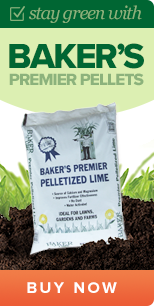The Many Uses of Limestone: Ways to Use Limestone
Table of Contents
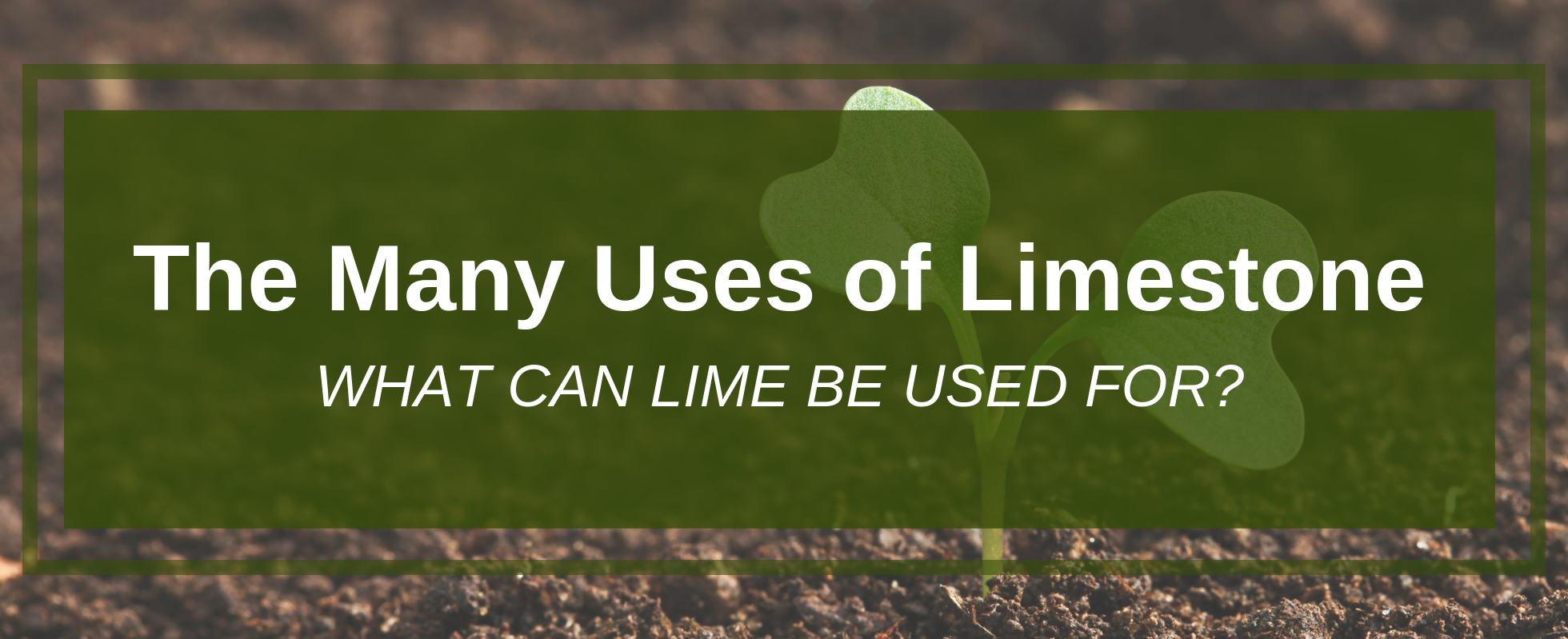
Author/Reviewed By: Josh Miller, Sales Manager: Baker Lime & North America Minerals
Published: 12/16/2014 – Updated: 5/24/2022
What Is Lime Used For?
Whether it’s in huge blocks or pulverized, limestone has a wide and varied set of uses. Pelletized or powder lime helps us grow food, build buildings, and even keep our teeth clean. Limestone is one of the most versatile substances and has a lot of different applications that can benefit our livelihood.
While our primary interest is how limestone can be used as a fertilizer for crops, lawns, and gardens, it adds depth to our understanding to consider the many uses other uses that pulverized limestone has. Considering what limestone is used for will give you the context in which to consider limestone uses for your home or business.
What Is Limestone Used For?
If you haven’t used limestone before you may be wondering “what is limestone used for?” Agricultural Lime (Ag Lime) helps take care of a particular challenge faced by farmers. As you grow over the years, in most cases your soil will become more acidic. This is due to erosion, leaching, the decomposition of organic matter, and a variety of other factors. Soil that becomes too acidic can have an extremely detrimental effect on crop yields and, thus, on your bottom line.
Luckily the solution to the gradual increase in soil acidity is rather simple. Uses for limestone have a wide range but is commonly used to adjust the pH in soil. Ag Lime is proven to be a simple and cost-effective way to counter the harsh conditions created by rising acidity. Applications of Ag Lime are a reliable way to keep your soil healthy and high-yielding.
What Is Limestone Good For?: Common Uses of Limestone
Using Limestone for Agriculture
Ag Lime is a soil conditioner. It is made from crushed limestone that is sometimes deployed in pellet form. The pellets allow it to be spread evenly with minimal dust, yet they break down into a finely pulverized texture when it is activated with water. Once activated, Ag Lime dissolves and releases a base into a soil, thereby lowering its acidity for a better soil structure to support your crops.
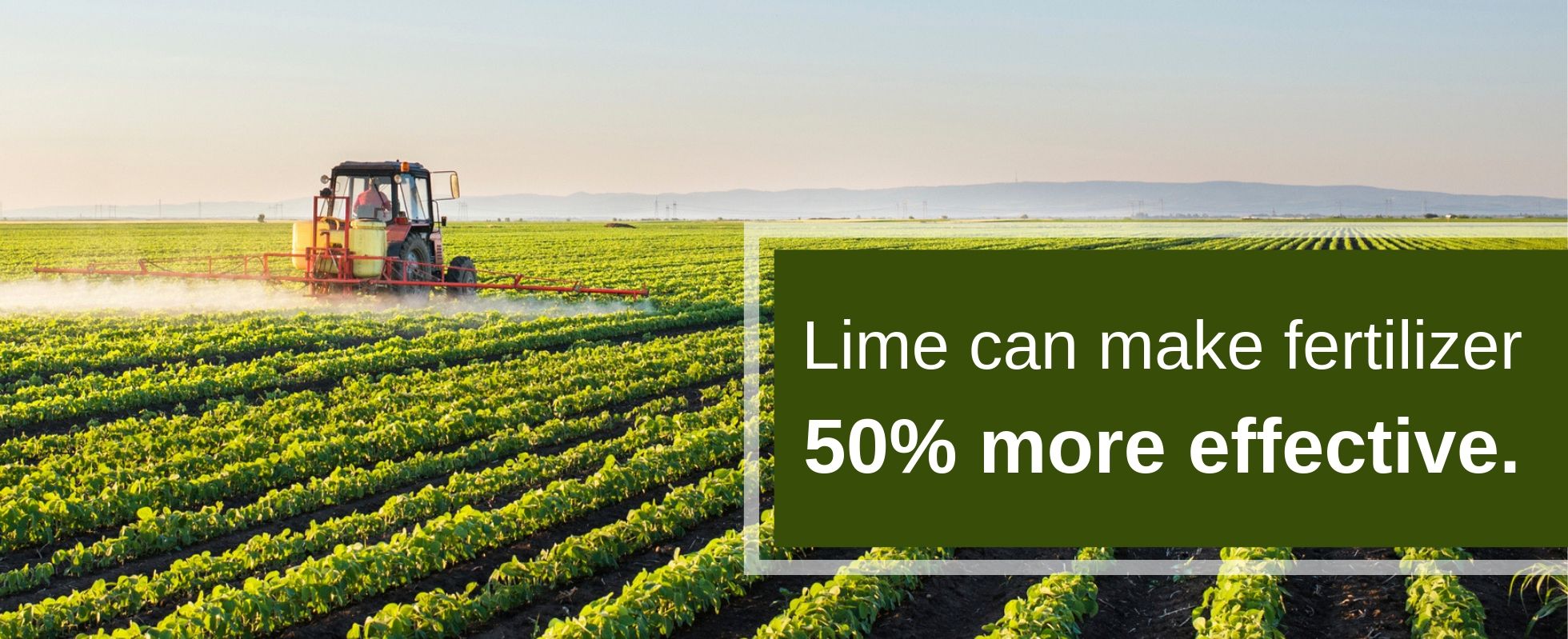
Ag Lime’s chemical properties allow crops to flourish in less-than-ideal acidity conditions. It can boost the profit potential of a farm significantly, while also making fertilizer up to 50 percent more efficient.
According to the International Plant Nutrition Institute, North American farmers tend to underuse Ag Lime. They typically use less than one third of the amount they need to create ideal soil conditions. Without educating themselves on the true benefits of Ag Lime, farmers may continue to expose their crops unnecessarily to overly acidic conditions.
Key Benefits of Ag Lime
Ag Lime has a number of particular benefits for farmers. Better education about these benefits should help the North American farming community increase their use of Ag Lime and better cope with the acidity in their soil.
The various benefits of Ag Lime application include:
- Improving the intake of nutrients by plants growing in the soil
- Making some herbicides more effective
- Supplying key minerals to crops, including calcium and magnesium
- Placing the physical, biological, and chemical properties of soil in better balance
- Taking toxicities out of the soil
- Helping with nitrogen fixation by legumes
How Ag Limestone Works
How does applying Ag Lime to your soil achieve these benefits? It’s largely a matter of chemistry. As Ag Lime brings soil pH values from acidic toward neutral, it bolsters the efforts of organisms that tend to break down crop residue, thereby improving the structure of the soil. It also tends to limit the amount that nutrients leach away from crops and improve the way plants retain water. All these effects are beneficial to your plants, making limestone a great addition to your soil.
Legumes rely on bacteria living on their roots to convert nitrogen in the atmosphere into a form that can be absorbed and used by the plant. Ag Lime promotes this action, allowing these bacteria to flourish and thereby allowing legumes maximum nitrogen fixation.
Soil at proper pH levels tends to foster stronger root systems. Plants growing in neutral soil typically put down more extensive root systems that are more finely divided. This allows them to absorb nutrients more efficiently. This effect is further bolstered because Ag Lime alters some nutrients like phosphorus and sulfur into a more plant-friendly form. Soil pH in the range of 5.8 through 7.0 (close to neutral) tends to maximize the availability of a host of valuable nutrients.
Ag Lime Helps You Grow
Ag Lime prevents a number of nutrients from becoming toxic. In soils with pH levels below 5.6, aluminum, manganese, and iron toxicities may become a significant problem. With Ag Lime keeping pH levels above 5.6, plants are also saved from toxicities related to calcium, magnesium and phosphorus.
Ag Lime enhances the performance of a number of herbicides and nematicides. Herbicides are typically most effective in conditions with neutral soil pH, so using Ag Lime will help your herbicides work faster, better and longer. It will also promote the breakdown of certain herbicides, which will avoid damaging rotational crops.
Applying Ag Lime will also directly inject valuable minerals into the soil. Ag Lime adds calcium to the soil while Dolomitic Limestone adds calcium and magnesium. Dolomitic Lime is particularly effective at addressing magnesium deficiencies, a persistent difficulty in acidic soil conditions.
Sugar Beet Lime
The Ag Lime that helps farmers across North America does not always come from a mine. Spent lime is a by-product of the beet sugar purification process and is very effective at creating neutral soil conditions. As sugar beets are processed, calcium carbonate limestone is added to help remove impurities. Once removed from the resulting pure juice, it forms a solid lime product that is no longer needed by the sugar beet processor.
Spreading lime from the processing of sugar beets on agricultural soil is a way to re-use a discarded material that would otherwise be wasted. Finding previously-used sources of lime is a way to reduce our environmental footprint while maintaining the soil conditions necessary for optimal agricultural production.
The Bottom Line About Ag Lime
Studies show that applying Ag Lime consistently provides a significant return on investment for farmers and their crop yield. The particular amount you should use is determined by your climate and soil conditions, as well as the crops you’re planting and how your rotation works. Sending a soil sample to a laboratory will help you determine exactly how much Ag Lime is needed to create the ideal conditions for your crops.
Oftentimes, lab reports on soil conditions will contain a recommendation on exactly how much Ag Lime should be applied to make your soil more neutral. In general, though, North American farmers tend to underuse Ag Lime and plant in overly acidic soil. So if you are still wondering what pulverized limestone is used for, limestone can provide substantively improved conditions and improve both the quality and yield of your crops.
The Benefits of Limestone for Gardens
Both Ag Lime and Dolomitic Lime can provide similar benefits to gardeners as they do to farmers. Ag Lime is made, essentially, from pulverized limestone. Dolomitic Lime is made from dolomite. It contains similar high levels of calcium, while also containing magnesium. Both can be effective for improving garden soil and provide a compelling case for the use of limestone for gardens.
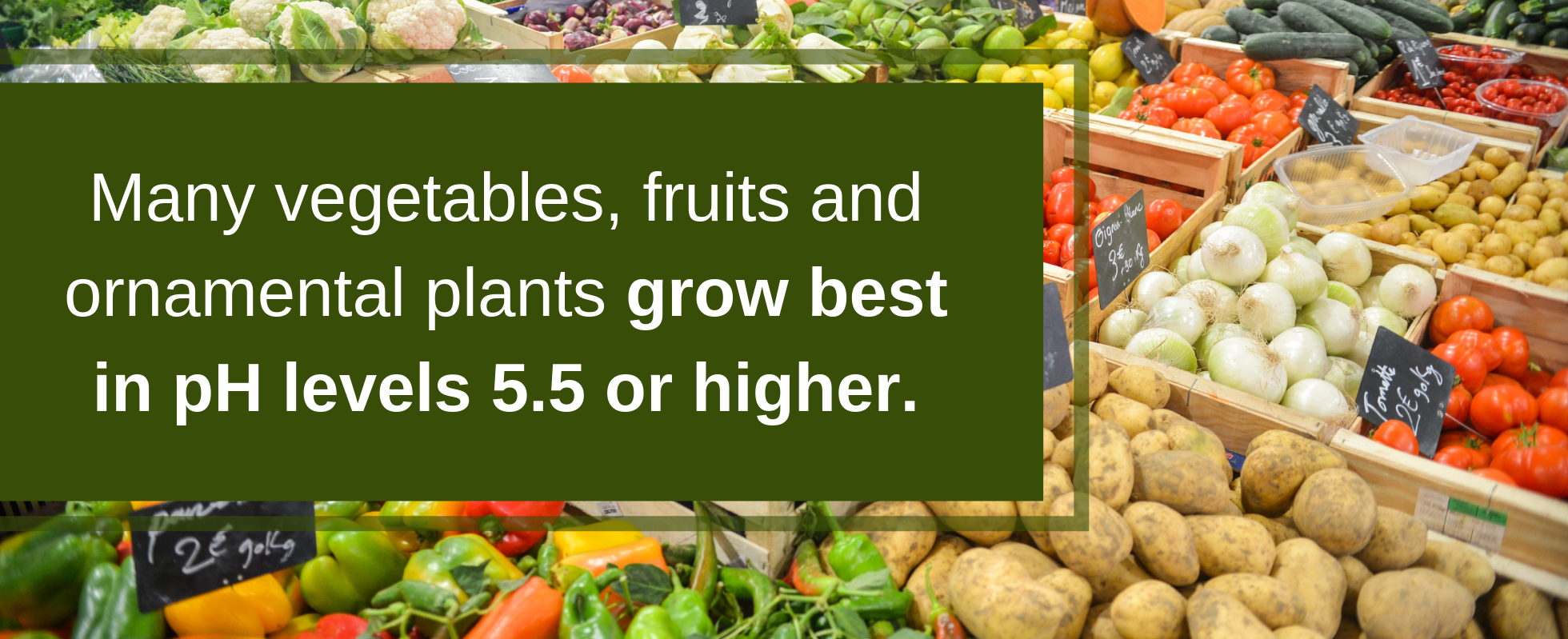
The principles of lime application for garden use are the same as for use in farming. A wide variety of vegetables, fruits, and ornamental plants find their optimal conditions in pH levels above 5.5. Below that, key nutrients become unavailable for absorption into plants, even if they are in the soil. Some nutrients, like aluminum, become overly available, which leads to burnt roots.
Soil that is too acidic can ensure no plants will grow, regardless of how much fertilizer is applied. The only way to be certain of the pH level of your soil is to have it tested. Soil test kits are available at garden centers and online, though the effectiveness of home testing can vary. For the most accurate results, consult with a soil testing laboratory. Knowing the pH level of your soil will help you determine the best way to use limestone for your garden.
Limestone Uses for Lawns
If your grass is not coming in with the thickness and color you would like, using limestone for lawns is an option you should strongly consider. Applying pulverized limestone increases bacterial activity in the soil, which creates a more favorable soil structure. It helps with the disintegration of organic matter and compost. This in turn makes the soil more porous, which increases the air’s ability to circulate through the soil and hold and absorb water. These factors help root systems grow stronger and collect more water and nutrients from the soil.
The optimal time to apply limestone for a healthy lawn is when soil is being prepared for planting. This helps to provide an even distribution and penetrate to the necessary depth.
Pelletized lime has a number of advantages in the use of limestone for lawns. You can spread it by hand, without getting dust everywhere. It doesn’t blow into areas where lime isn’t needed. It solves the problem of dust getting tracked into interior spaces or patios. And it’s easier to clean up if the bag breaks or the lime is misapplied.
Grow Your Greens
Turf managers need to maintain a tight grip on their golf course in order to make sure it plays right. They use silica sand in their putting greens and this tends to make the soil too acidic. The Bermuda or Bentgrass used on most putting greens needs careful maintenance above and beyond the care given to the typical home lawn. Monitoring the soil’s pH balance, particularly soil that interacts with silica sand, is key to keeping the grass healthy and playing well.
Different turfgrass species and varieties each have their own ideal soil pH level. While the optimal pH range for Kentucky bluegrass is between 6.0 and 7.0, fine fescues prefer a more acidic range of 5.5 to 6.0. If you’re managing a golf course’s turf, or even building a backyard putting green, it’s incumbent upon you to keep a very close watch on your soil’s pH level, and apply lime if it gets out of the ideal range.
Use Lime to Keep Your Horses Healthy and Happy
In cold climates, horses need to stay warm in the winter. This means barn owners must keep their barn doors closed, which in turn means horse stalls are getting less ventilation. Under these conditions, the level of ammonia in the horse’s stall can build up quickly.
Ammonia comes from a substance in horse urine and manure called urea. While urea has no odor and is not toxic, it can quickly and naturally convert to ammonia. If there’s too much ammonia in the air, it poses a threat to horses. Exposure to too much ammonia can cause thrush and respiratory problems for horses because it irritates their airways.
Crushed lime placed under the horse’s stall will help absorb ammonia odors and soak up moisture. Take care that the horse does not come into direct contact with lime, since it can be caustic. Place the limestone underneath bedding so the horse does not stand directly in it or get it on its skin. Safely applied, lime can help keep horses healthy in the winter months.
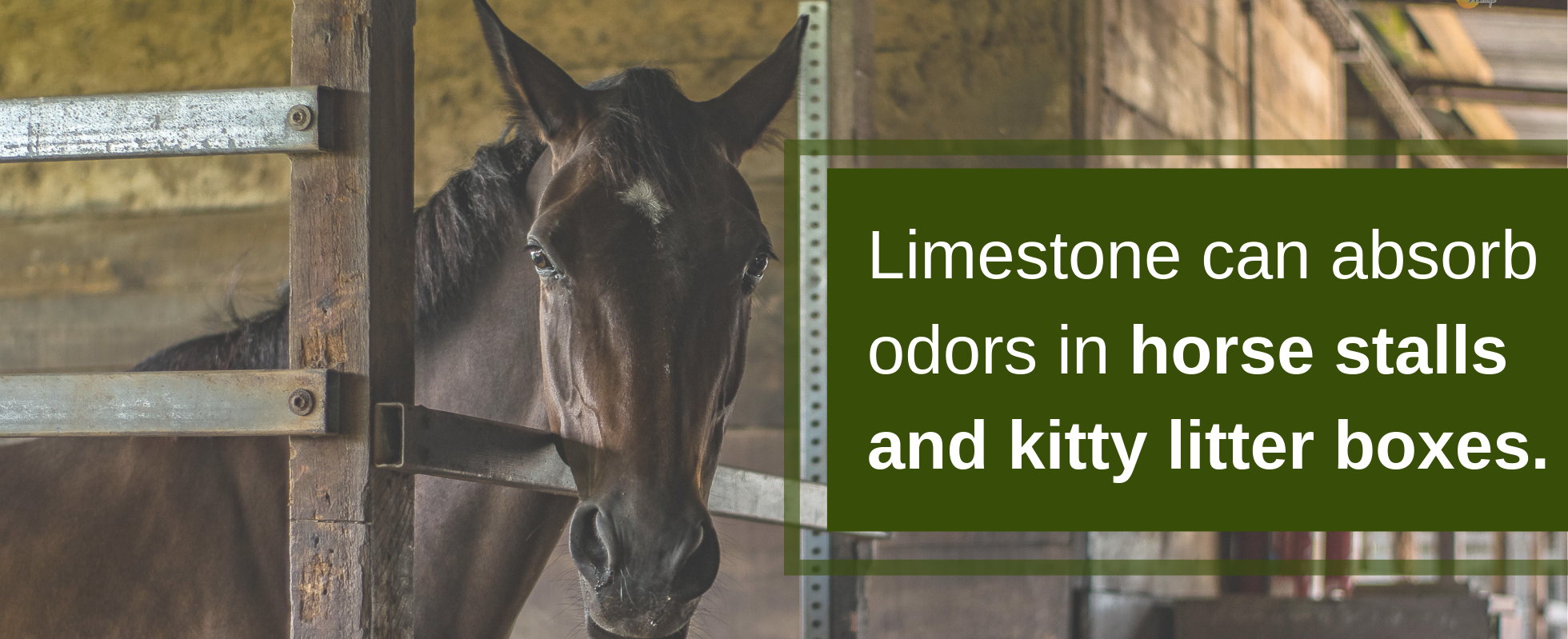
Limestone Uses in Kitty Litter
The same principles that make limestone an odor-and-moisture-absorbent material for horse stalls make it an effective ingredient in cat litter. Your cat’s urine contains ammonia, and while exposure to small amounts of ammonia in the short term is harmless, it can ultimately cause irritation and respiratory problems for your feline friend. As an ingredient in cat litter, limestone helps counteract the effects of ammonia build-up while making your cat’s litter box dryer and easier for you and your cat to be around.
Using Limestone for Construction
Blocks or plates of limestone have been used in building for centuries. The Megalithic Temples of Malta are made entirely of limestone, as are some of the oldest surviving free-standing structures. Many medieval churches and castles in Europe are made of limestone, and even the Great Pyramid of Giza is covered entirely in limestone.
But it wasn’t only ancient buildings that used limestone as a key material. Limestone was very popular in the Victorian era, and after the 20th Century. Many train stations or banks that date from that era are built of limestone. The town of Kingston, Ontario, Canada has so many buildings made from it that it gained the nickname the “Limestone City.”
While limestone is susceptible to reaction with acid solutions (thus making acid rain a difficult problem for limestone statues and monuments), it continues to be an important building material today. A form of limestone called “travertine” is a popular choice for tiles and exteriors, and thus the long tradition of using limestone as a building material continues.
Limestone Uses in Roads
Crushed limestone is a key ingredient in construction aggregate, the solid base of many roads. It’s also used in the asphalt that covers the road. Limestone is a crucial material for road construction and shows no signs of slowing down as we look to update our roads and urban infrastructure.
Using Lime in Toothpaste and Statues
Limestone even has a hand in keeping your teeth clean. It has long been used as a white pigment, and now it serves that function in a variety of industrial products in addition to road construction and stall bedding. In toothpaste, it works as both a pigment and a filler. It is a particularly inexpensive filler, so it finds its way into a variety of papers, plastics, paints and tiles. Limestone helps these industrial products get bigger, and also shine brighter.
Because it is a softer material, limestone is used in a wide variety of carvings and statues dating back hundreds of years. Limestone’s susceptibility to acid rain causes many outdoor limestone statues to suffer, but it is still used today due to its suitability for carving.
The simplicity and beauty of natural limestone complement its many agricultural, construction and industrial uses. It is a truly versatile material, making our cities and spaces more attractive, while also helping to keep our soil healthy and in balance. Limestone’s many uses help make the world a more livable, beautiful place.
Limestone for All Your Needs
If you’re interested in how Baker Lime’s Ag Lime products can work for you, browse our many product offerings. Baker Lime has been in the business since 1889, making us a trustworthy and dependable source for high-quality crushed and pulverized Ag Lime products. Find and contact your local Baker Lime dealer today!
You May Also Like:
Using Garden Lime for Healthy Plants





